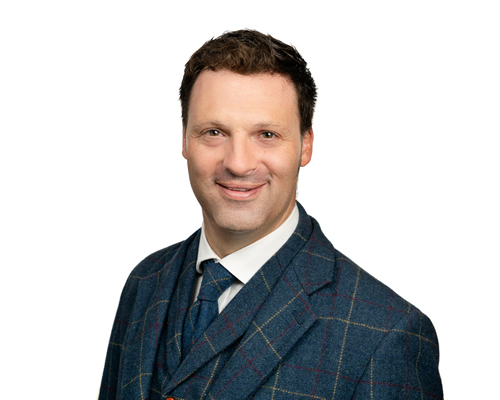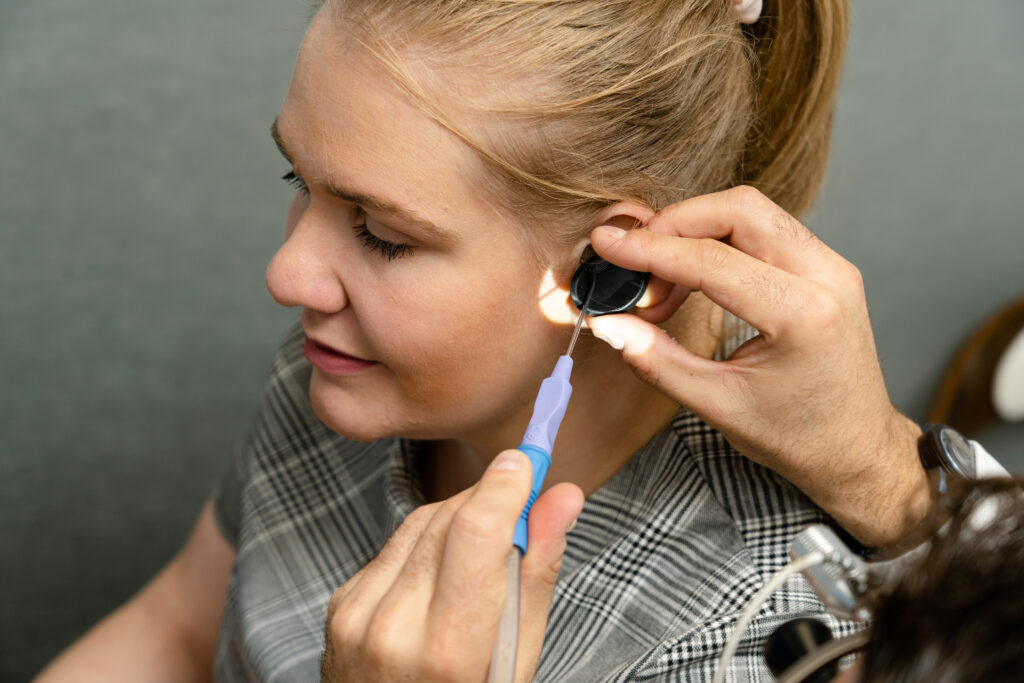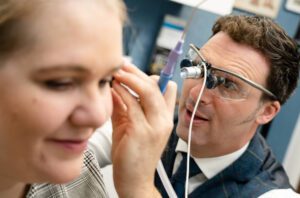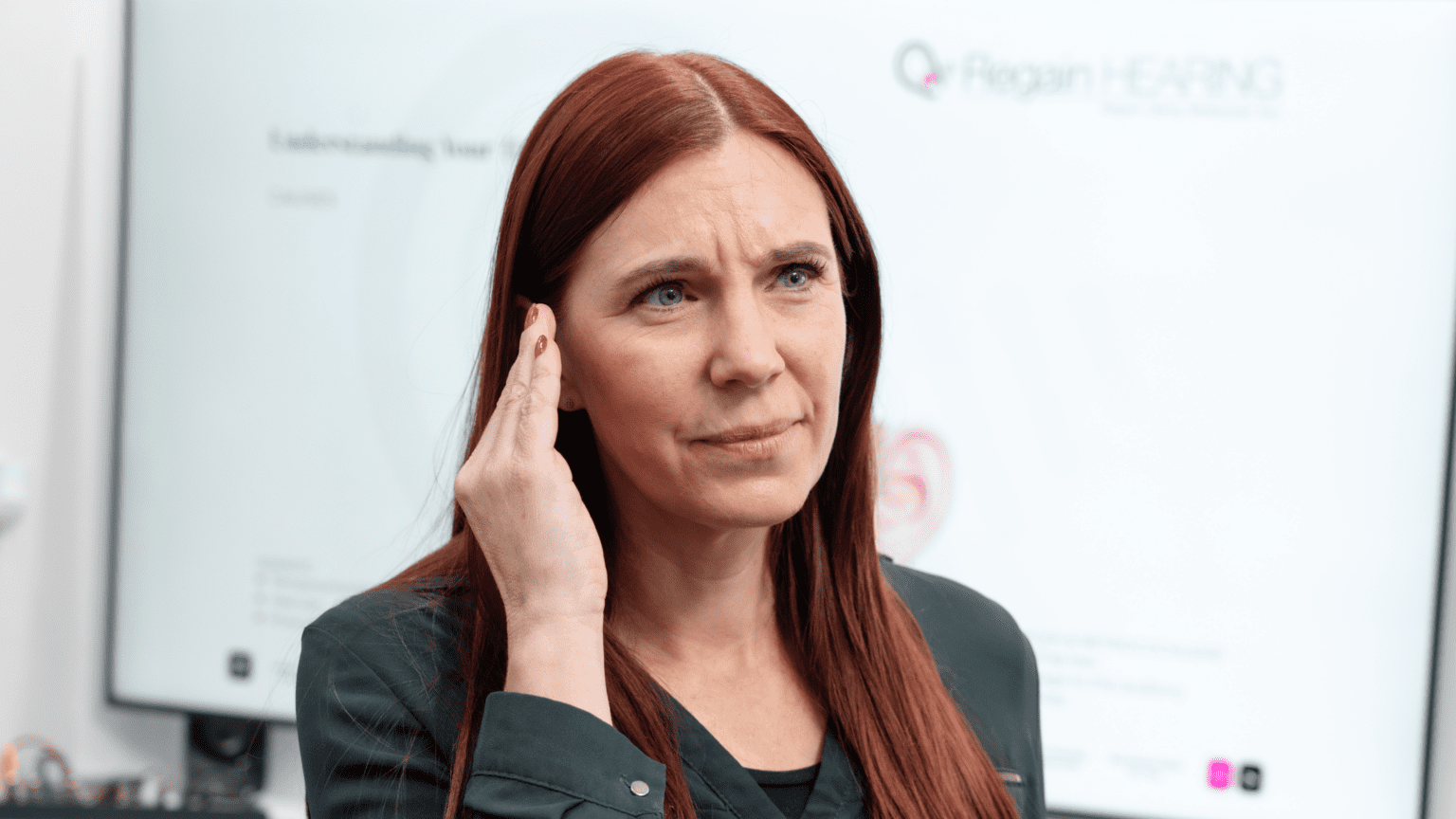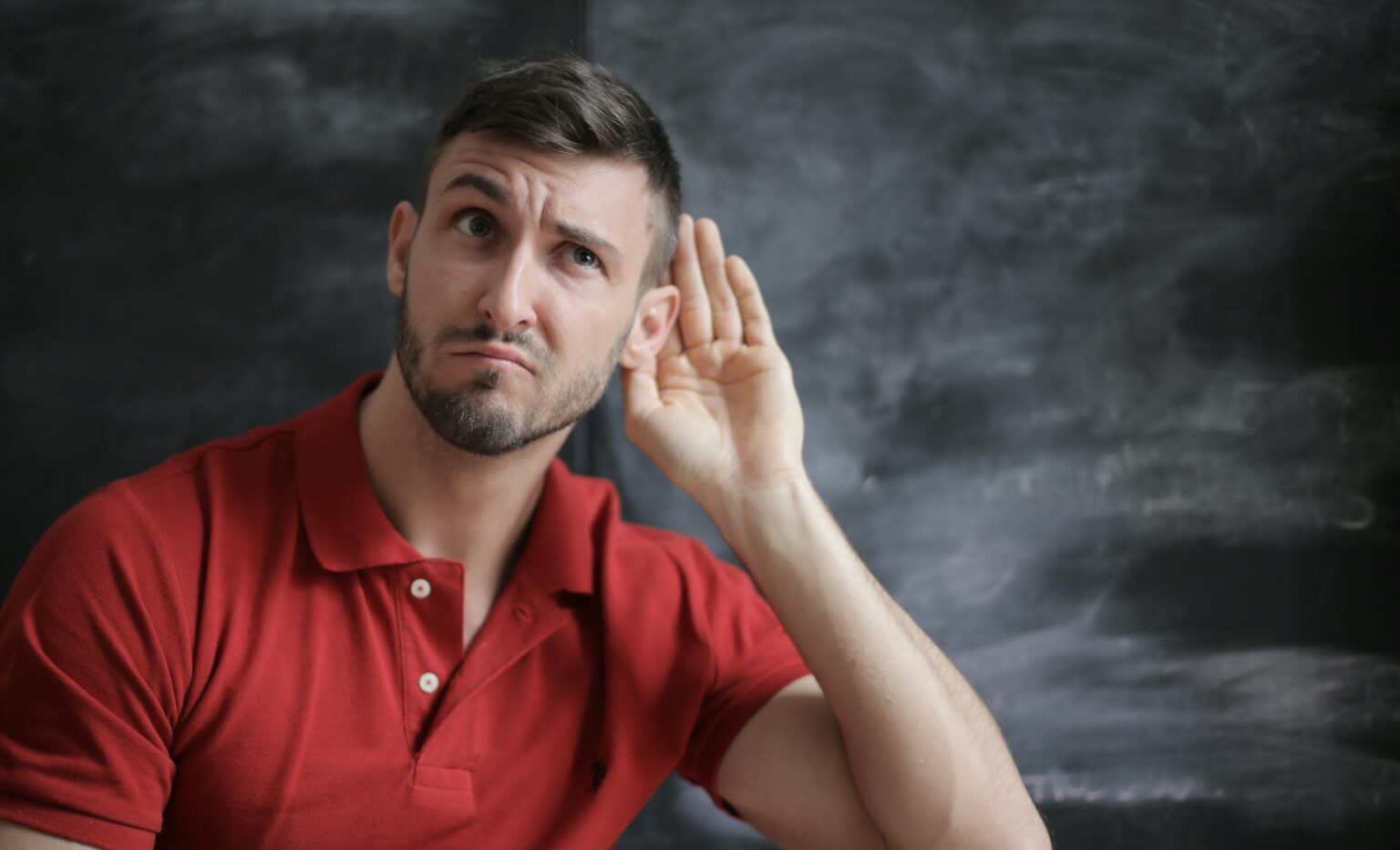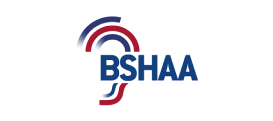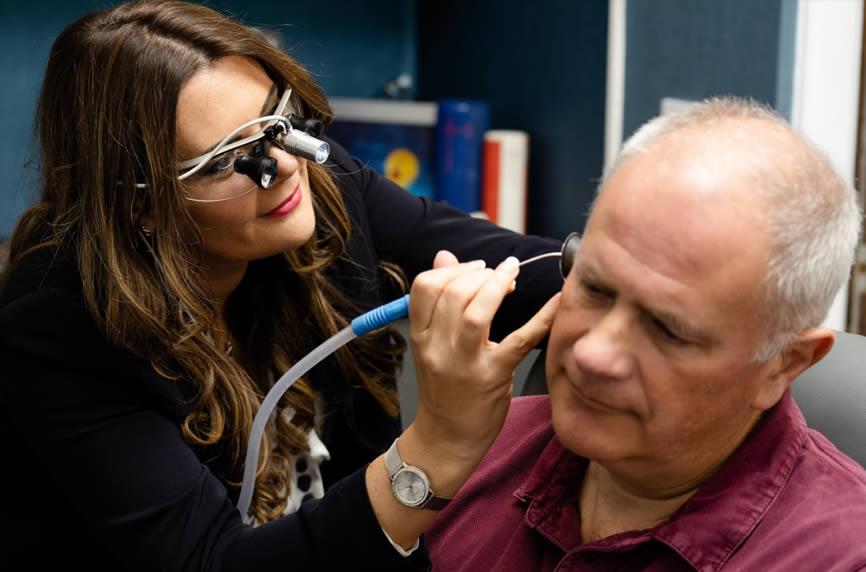
Are you wondering what microsuction ear wax removal is, and how to remove ear wax buildup? Microsuction earwax removal, often called ear vacuuming or ear wax suction is a frequently used manual method for removing earwax. During the procedure, a qualified audiologist or doctor uses a slim nozzle that is inserted into the ear to effectively remove the wax through suction.
In this post, we explain how microsuction ear wax removal works and why it is widely considered superior to syringing and is the most popular ear wax removal procedure.
Producing excess ear wax is a common problem among people of all ages. You can either try to deal with it yourself or, as highly recommended, see your GP or an audiologist who can do microsuction ear wax removal for you.
Why Does Ear Wax Build Up Happen?
You may wonder what ear wax is for and why we need it. After all, it can be problematic and frequently needs to be removed as there’s often too much of it. But this sticky substance is vital for your ears and your overall general health.
Earwax traps debris and pathogens, like bacteria and viruses, from getting further into the ear canal and lubricates the ear’s delicate lining, so it doesn’t dry out. Problems arise when cells lining the ear canal produce too much ear wax or when you have an average amount but cause a buildup by cleaning your ears with a cotton bud, inadvertently pushing it further down into the canal, causing impacted earwax.
Under normal circumstances, ear wax dries out, naturally migrating to the ear’s outer part and falling out, usually when you’re asleep. But, if like many of us, you like to wear things in your ears, especially headphones, to talk on your phone or listen to music, these can have a negative effect. This is because the wax in your ear can’t get out the usual way.
So what is microsuction ear wax removal, and why is it the preferred method of cleaning out impacted wax in your ears? We’re going to get to that shortly, but first, we will look at some symptoms of excess ear wax that might be telling you it’s time to get your ears checked.
Eight Signs You Might Need Microsuction Ear Wax Removal
A buildup of wax in your ears is not something you might think of immediately if you notice difficulty with your hearing — unless it’s a problem you’ve encountered before and had it dealt with.
Here are eight of the most common signs that you have too much ear wax and need to have ear wax removed:
- Partial hearing loss: You can’t make out conversations and hear other sounds the way you used to, and may strain to understand what people are saying.
- Muffled sounds: you can hear the way you usually do, but some sounds are unclear, and you may wonder why.
- Fullness in your ears: you notice that your ears have been feeling as if they’re “full”, and indeed they might be stuffed with ear wax.
- Itchiness: your ears may be itchy, and you try to scratch the inner parts.
- Tinnitus: a buzzing or ringing in your ears that has gradually or suddenly developed.
- Earache: an infection may have developed in your ears because of too much ear wax.
- Dizziness: you’ve sometimes felt dizzy and perhaps have developed vertigo.
- Coughing: it might seem odd, but impacted ear wax can also cause coughing fits, even though you might think there’s no connection between the two.
So there are a lot of symptoms that will give you clues as to whether you have a buildup of ear wax and if it’s become impacted. And as we’ve touched on, it’s not recommended you use cotton buds in your ears to try and get it out; in most cases, that results in just making your ear wax more compacted and can cause damage to your eardrums.
Additionally, the only way to break up a buildup of ear wax is with either ear wax syringing or the more advanced microsuction ear wax removal method, performed by an audiologist, like our audiologists at our hearing clinics in London, Kent and Essex.
The microsuction process explained: Step by Step
So what can you expect from a microsuction appointment? Our audiologists break this down:
- Consultation: We start the appointment with a consultation. We’ll ask about your medical history, any symptoms you’re experiencing, and any previous ear problems. This ensures that microsuction is a safe and suitable option for you.
- Examination: We then examine your ear using an otoscope. This tool allows us to see the ear canal and the earwax blockage clearly. The examination confirms the presence of earwax and assesses the condition of the ear canal.
- Pre appointment preparation: We recommend applying olive oil or ear drops to your ears for at least 2 days before your Microsuction appointment. Please refrain from using them on the day of the appointment itself. The oil serves to lubricate your ear canal and soften the wax, facilitating a smoother and more efficient removal process with the suction probe.
- Explanation: On the day of the appointment we explain the microsuction process to you. We’ll inform you about what to expect, including any sensations or noises, and how you can signal us if you feel uncomfortable at any point.
- Preparation: We might ask you to sit in a specific position, usually upright or with your head slightly tilted. We then prepare the microsuction equipment, which includes a microscope or magnifying glass for a clear view and a suction device.
- Microsuction procedure: Using the microscope to precisely view inside your ear, we gently insert the tip of the suction device into your ear canal. We carefully vacuum out the earwax. You’ll likely hear a loud noise from the suction, but the procedure is generally painless.
- Checking the ear: After removing the earwax, we check your ear again to ensure the blockage is cleared and that the ear canal is healthy. We may use the otoscope again for this purpose.
- Aftercare advice: We give you advice on how to care for your ears following the procedure and how to prevent future earwax build-ups. This may include tips on ear hygiene and avoiding certain activities for a short period.
- Follow-up: If necessary, we’ll schedule a follow-up appointment. This might be required if there was a significant amount of earwax or if we need to re-examine the ear after the initial cleaning.
What do our audiologists say?
“I find microsuction to be a revelation in ear care. It’s not just about removing earwax; it’s about restoring a sense of normalcy and connection to the world for our patients. With microsuction, we can precisely and safely clear the ear canal, often providing immediate relief and improvement in hearing. It’s a gentle, efficient procedure that underscores our commitment to patient comfort and auditory health. In our hands, microsuction is more than a treatment—it’s a pathway back to clarity and the rich sounds of life.”
Lee Fletcher, (RHAD), (BSHAA), Ba(Hons)Company Director, Principal Audiologist
What are the benefits of microsuction?
Audiologists believe that microsuction ear wax removal is widely considered the most effective and safest way to remove compacted ear wax. Here’s why:
- It’s very safe: Microsuction is considered one of the safest methods for earwax removal. The procedure allows for a high degree of precision and control, significantly reducing the risk of injury to the ear canal or eardrum.
- The procedure is efficient: It is a quick procedure, often taking just a few minutes per ear. This efficiency minimises discomfort and allows for a swift resolution to symptoms caused by earwax blockage.
- The results could be immediate: Many patients experience instant relief from symptoms such as hearing loss, ear discomfort, or tinnitus following microsuction. The immediate improvement in hearing and reduction in discomfort is a significant benefit.
- Microsuction is suitable for most people: Microsuction is suitable for almost everyone, including individuals with narrow ear canals, eardrum perforations, or those who have had previous ear surgeries. It’s also a preferred method for people who use hearing aids.
- Microsuction is a dry procedure: As a dry technique, microsuction reduces the risk of infection since no water is introduced into the ear canal. This aspect is particularly important for individuals prone to ear infections or with conditions that water exposure might exacerbate.
- Microsuction is painless: While some might experience a mild, temporary discomfort due to the noise of the suction, the procedure is generally painless.
Microsuction Ear Wax Removal vs Ear Wax Syringing
You can read more about why microsuction is the preferred option vs ear wax syringing here.
Here are some of the benefits of microsuction ear wax removal over ear wax syringing:
- Less messy: Since it does not involve the use of liquids, microsuction is generally cleaner and more comfortable for the patient compared to irrigation or syringing methods.
- Reduced infection risk: There is less risk of infection, which can be caused by squirting water into your ear with a syringe.
- Painless: There is no pain, which many patients say they experience when their ears are syringed.
- It’s gentle: The suction used to remove wax is gentle on the ears and doesn’t damage the delicate lining, which can be a risk factor when syringing the ears.
- Fewer side effects: The suction action of microsuction eliminates the risks of the side effects of syringing, including tinnitus, dizziness and wax coming out hours after the procedure.
Which Ear Wax Removal is Best?
By this point, it may seem obvious that microsuction ear wax removal is a more advanced method and has a number of advantages over ear wax syringing. But another significant benefit of microsuction ear wax removal is that the device has a camera attached that gives the audiologist a clear view of the inner parts of the ear and the amount of wax.
During an advanced video otoscopy examination, the camera projects a high-definition (HD) image of your ear canal onto a large screen. This allows the audiologist to properly inspect your outer and middle ear to ensure all ear wax buildup is removed effectively and check for any inflammation or signs of issues. At the same time, it also provides an opportunity to take immediate action before it develops into something more serious, like an infection or a potentially perforated eardrum.
What are the side effects of microsuction?
Limited research has been conducted on the safety of microsuction. A study from 2010 revealed that 55% of participants experienced side effects, though most were mild and short-lived. The most frequently reported side effects included:
- Dizziness
- Discomfort from the procedure’s loudness
- Diminished hearing
The study also noted that pre-treatment with ear drops could decrease the reported intensity of pain and dizziness.
While uncommon, there are more severe risks associated with microsuction, such as:
- Infection
- Temporary or permanent hearing loss
- Eardrum injury
- Aggravated tinnitus
How to Prepare for Microsuction Ear Wax Removal
Microsuction ear wax removal uses gentle suction to dislodge and remove wax from your ears. With syringing, you’d need to use ear drops a few days or up to a week before the procedure, especially in cases where there’s a big wax buildup, so that it isn’t too hard to remove.
But unlike syringing, before microsuction ear wax removal, the wax doesn’t need to be softened up, and it doesn’t matter if it’s hard. So if your audiologist recommends you have impacted ear wax, they usually won’t prescribe ear drops before microsuction ear wax removal as the suction action can easily break up and suck out hard wax. Plus, it ensures that nothing is left behind that could cause another and immediate buildup of ear wax, sending you back to square one.
So with microsuction ear wax removal, you can have it done straight away and don’t have to trouble yourself with preparing days in advance. It’s the hassle-free, comfortable and safe way to get rid of ear wax and hear clearly again.
Microsuction Ear Wax Removal FAQ
1. Can I have microsuction ear wax removal if I have a cold or sore throat?
Yes, but it may be more uncomfortable, so we don’t recommend having it done when you are unwell.
2. How often can I have microsuction ear wax removal?
There is no limit. However, if you produce a lot of ear wax, you will only need to have microsuction removal every four to six months at the very most.
3. Can I have microsuction ear wax removal with a perforated eardrum?
Yes, if you have a perforated eardrum it is the recommended method of removing ear wax.
4. Is microsuction ear wax removal safe with grommets?
Yes, it is safe following most types of ear surgery, including grommet insertion.
5. Is microsuction ear wax removal available on the NHS?
GPs do not perform microsuction ear wax removal, but they can refer you to a hospital. However, they will likely require you to try ear drops for around six weeks before they do this and waiting lists can be up to six months or longer.
6. Is microsuction painless?
Microsuction is generally considered a painless procedure. Most patients report experiencing little to no discomfort during the process. The method involves using a small suction device to gently remove earwax from the ear canal, and while it is very safe and precise, some individuals might experience minor sensations such as:
- A feeling of pressure or suction in the ear.
- The noise of the suction, which can be somewhat loud and unusual to some people.
However, these sensations are typically not painful.
Do you suspect you have ear wax buildup and would like it removed with microsuction? Call or complete our online form to learn more about microsuction ear wax removal in Kent, London or Essex at Regain Hearing clinics.

